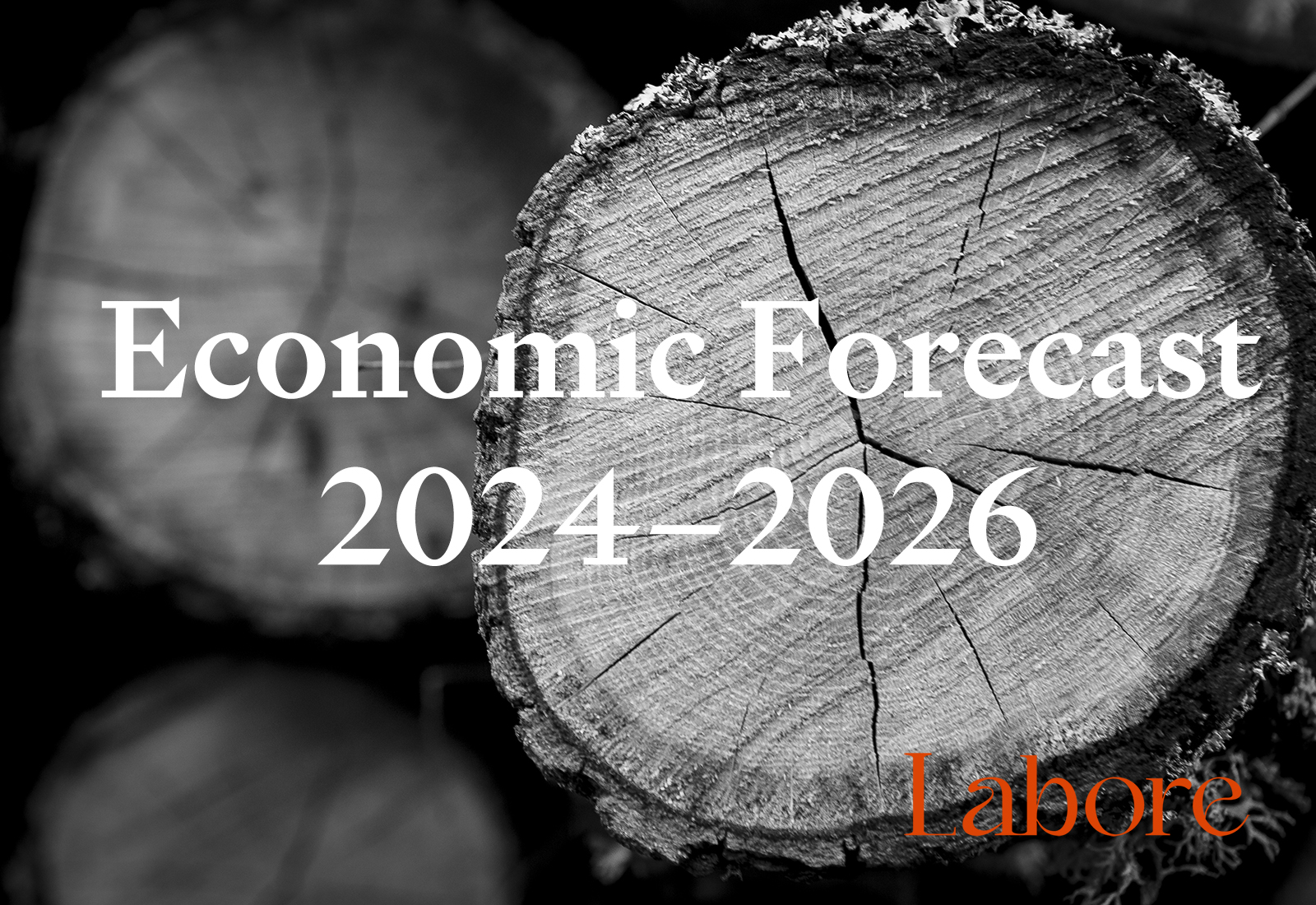Finland will return to its growth path – a bumpy road is not a reason for stopping
Economic Forecast 2023–2025

Economic forecast for the years 2023-2025
- The Finnish economy shrinks slightly this year
- Core inflation decreases slowly and diminishes purchasing power
- Growth speeds up in 2024 and 2025
- Growth of export markets makes exports increase
- The lowering of public deficits requires patience
Labore forecasts the Finnish economy to grow -0.2 per cent this year, 1.0 per cent in 2024, ja 2.7 per cent in 2025. In our forecast the current year will be a year of weak growth also in the euro zone and in the USA because of stronger inflation and tightened monetary policy, but growth will speed up in the years that follow. Although the possibility of a banking crisis is a serious threat because of (among other things) the expansive monetary policy that preceded the corona crisis, we do not view such a crisis as the most probable scenario. However, the threat of a systemic crisis might put restrictions on the increases in central bank interest rates.
In our forecast export growth is slow in the current year (1.0 per cent), but it will revive later on due to an increasing export market. Investments are reduced in the current year because of increasing interest rates and the economic downturn. In recent years, investments in machinery and equipment as well as R&D investments have been growing moderately, and aggregate investment grows due to them also in 2024–2025.
The purchasing power of households will be reduced due to fast inflation and moderate wage increases. Although energy prices, which increased rapidly last year, have in this year been sinking, core inflation is reduced at a lower pace. On the other hand, high rate of employment and the previously high savings rates support private consumption. We forecast that the savings rate will remain negative during the forecast period and that although private consumption reduces this year, it will grow again in the years 2024–2025.
Public finances will run a deficit in 2023-2025 despite the increasing surplus of the pension and social security funds. Tax revenue growth is expected to moderate slightly in accordance with the forecasted slight decrease of the gross domestic product growth in 2023. At the same time government spending is foreseen to remain strong.
Although Finland should narrow its chronic public deficit during the two upcoming government terms, the public economy would benefit from patience in decreasing it within the immediate forecasting period. Otherwise, an overly strong simultaneous tightening of monetary and fiscal policy may freeze the indispensable economic growth required to slow down the overall debt growth.
In addition, Finland’s capacity to handle debt depends crucially on long-term growth prospects, which, due to the country’s demographic structure, rely crucially on productivity growth. Finland has a strong potential to reach relatively strong productivity growth if the necessary investments to R&D are made. There is clearly room for improvement due to the prevailing technological productivity gap between Finland and the global productivity frontier.
Productivity growth is difficult to predict, which makes the extent of the needed public deficit reduction difficult to assess. Instead of making dramatic budget cuts, the optimal policy for the coming government would be to develop a long-run plan which specifies a variety of budget balancing measures and from which policy measures would be chosen on the basis of updated information on the state of the public economy.

- Ilkka Kiema
- Research Leader
- Tel. +358-40 940 2287
- ilkka.kiema@labore.fi
- Profile


